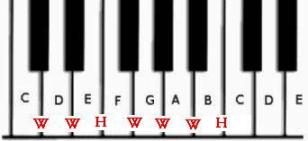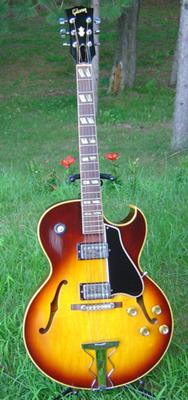Understanding Music Key Signatures
A working knowledge of music key signatures is probably THE most important tool of composition, improvisation, and understanding how music is written. The key signature tells you what notes in each scale (key) are sharp or flat.
The key to understanding music key signatures is to remember how the major scale is constructed. In the major scales lesson, we talked about the pattern of whole steps and half steps. If you need to refresh your memory:

This pattern of whole and half steps remains constant, regardless of which note you begin on. For example, if you begin with "g", in order to keep the pattern, you have to go from "e" to "f#" to get a whole step between the 6th and 7th notes. Hence, the G major scale has one sharp, "f"#.

The key signature for G Major is therefore One Sharp--F#
Here is a table sharp key signatures--the scales which have sharps:
SCALE OR KEY |
SHARPS |
||||||||||||||||||||||||
|
|||||||||||||||||||||||||
The best thing to do is to memorize this table. It is easy to use: the left-hand side lists the names of scales (scale and "key" mean exactly the same thing). The right-hand side tells you the names of the sharps in that key. The words are just a way to help you memorize.
FOR EXAMPLE: If you want to know how many sharps in the key of "E", start with "G" on the left side and count down to "E" to find that "E" has 4 sharps. If you want to know what they are, count down 4 on the right side to find that the sharps are F# C# G# and D#.
Memorize this table and then practice naming the sharps in all the keys from memory. For extra practice, use the chart in your memory to write the names of all of the notes in each scale.
Click here for the key signatures of the scales with flats
Leave "Music Key Signatures" and Go To "Music Theory Basics"
Go To "Absolutely Free Music Lessons"





New! Comments
We welcome your comments and ideas! Leave a comment in the box below.